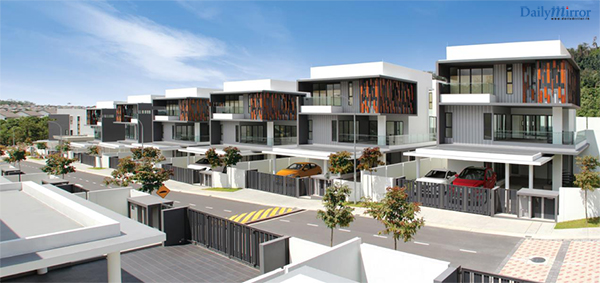Reply To:
Name - Reply Comment

Sri Lanka has been rapidly developing since the end of a three-decade civil war. The political stability of the country and its infrastructure development has helped the economy progress over the last few years. In addition, the growth in non-traditional industries such as Apparel, Information Technology and Tourism have all contributed for Sri Lanka to be an Emerging Hub in Asia.
Historically there has been a strong correlation between urbanization and GDP per capita especially in emerging countries. Rapid urbanization continues to impact the Sri Lankan economy. The economic growth of the country and overall infrastructure development has made local and international investors to actively seek out opportunities in the real estate sector. This transformation has resulted in both the demand and supply of housing, retail and commercial spaces to increase year on year. Though the key focus has been within the economic hub - Colombo - several residential and commercial projects have gradually begun targeting the suburbs and other districts. This exemplifies that investors see the potential, not just in the commercial capital, but in what Sri Lanka has to offer as a whole, especially in terms of real estate and the property industry.
If we focus on the residential segment of the Western Province of Sri Lanka in particular, the demand for property and housing is continuously on the rise. This has also resulted in property prices to virtually sky rocket due to the natural scarcity of land. As a result, suburban areas in the Western Province such as Dehiwala, Mount Lavinia, Wattala, Negombo, Battaramulla, Nawala, Kaduwela, Rajagiriya, Thalawathugoda, Homagama, Athurugiriya, Malabe, Moratuwa, Piliyandala and Panadura has seen a renewed interest by both prospective buyers and developers. This is due to its lower price compared to Colombo City limits, visible improvements in infrastructure and also overall level of economic activity. From a Sri Lankan perspective, these areas can be referred as Tier II cities.
An interesting trend evolving in Sri Lanka is the concept of ‘Gated Communities’ or ‘Gated Living’. This concept has been very popular across the world with countries like Malaysia embracing it in the early 1990’s. This concept is not new for Sri Lanka either but what is clearly evident is that the trend is towards suburban areas with a smaller number of units typically 10 -20 in total. Over the years many authors have attempted to define the concept of Gated Communities.
In the simplest form, a Gated Community is a physical space or development which has restricted access to outsiders whilst having a common code of conduct among tenants (residents) within the development. A typical development therefore, may be surrounded by fences, walls, or other natural barriers that limit the access to people who are not part or residents of the development. A Gated Community Development can include Town Houses, Duplex Units, Semi-Detached Houses, Bungalow’s, Villas and also Apartments. However, there are some design and functional characteristics that differentiate a ‘Gated Community’ or ‘Gated Living’ development with other residential developments. The main characteristics are as follows:
1) Increased Emphasis on Security – The prime consideration of any gated community is security. From the starting point or entrance of the development to the individual residential units, security and safety is managed through physical personnel and the use of technology such as CCTV camera’s and IOT Based devices.
2) Integrated Facilities – Gated Communities often have common internal roads, recreational facilities such as a swimming pool, clubhouse facilities, mini-mart, gymnasium, walking paths, a common park(s), round the clock maintenance, children’s play area etc.
3) Lifestyle Based Living – Gated Communities often have people who have similar lifestyle preferences and aspirations. Most Gated Community developers allow prospective buyers the flexibility to customize their units which may not necessarily be the case with an apartment complex.
4) A Quiet Living Experience – Gated Communities are well known to offer a quiet and serene environment in comparison to the noise, pollution and traffic associated with a typical city development.
Research conducted by Paramount Realty recently identified opportunities for growth and development in Tier II cities and believes that these cities provide significant opportunities for both developers and investors.
Paramount Realty focuses on bringing the 'affordable living concept' to these emerging cities through novel concepts. Inspired by a vision to be the market leader in providing innovative real estate solutions, Paramount identifies the need to fulfil the emerging trend for ‘Gated Communities/Living’ in suburban Sri Lanka. Therefore, the company will be launching two ‘Gated Community’ projects in Panadura and Hokandara. These Emerging Tier II Cities have been selected due to its demographic and psychographic profiles, existing and planned infrastructure, close proximity to city limits and the overall demand for housing in these locations. Each of the Gated Community Projects of Paramount will have enhanced security features, common facilities, comfortable living spaces, functionality based design and modern amenities all at affordable price.